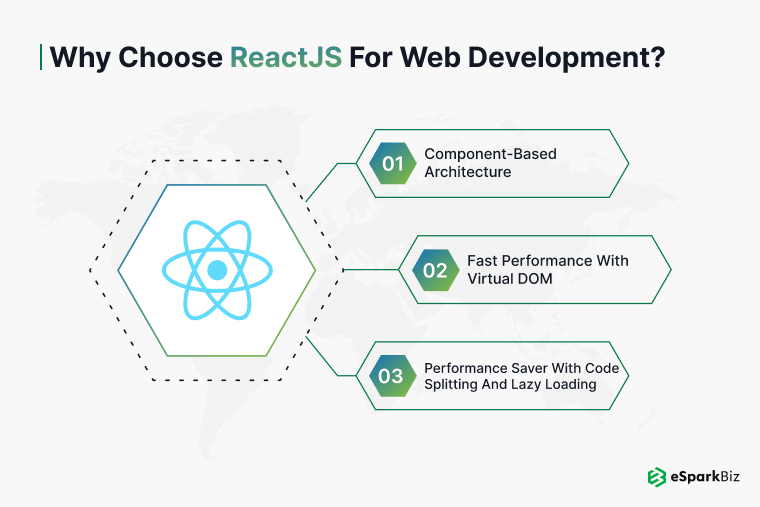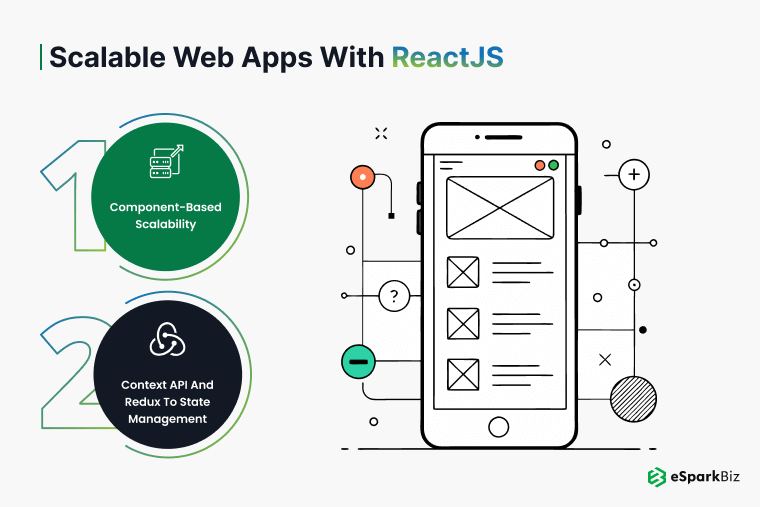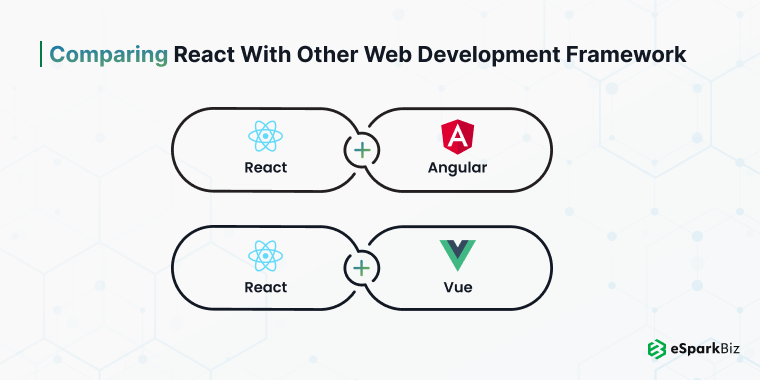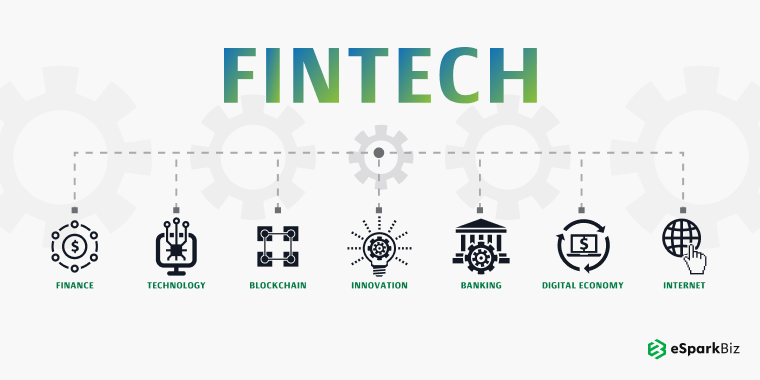Introduction to ReactJS
While making a Web Application you want something that is fast, scalable, and more so efficient. All of these boxes are checked by ReactJS. React was developed in 2013 by Facebook and it has evolved into one of the most popular JavaScript libraries for building interactive user interfaces.
With its component-based structure and Virtual DOM, React has gained the confidence of tech giants like Instagram, Netflix, and Airbnb. By 2024, it has established itself as the leading choice for front-end web development.
React is capable of creating anything from small single-page applications (SPAs) to large-scale enterprise platforms.
ReactJS not only revolutionized the way we build websites but also the way we think about web development. React knows what needs to be updated and only updates those things, which is why there is zero waiting time for users as we encounter in platforms like Facebook and Netflix.
So why use ReactJS as a choice weapon when it comes to web development? In this post, we will dig into the advantages of leveraging ReactJS for your project.
Benefits of ReactJS for Web Development

Component-Based Architecture
The most significant way how React changed the game for experienced developers is probably through its component-based architecture. It enables you to split the user interface into independent and reusable pieces called components. You can develop, manage, and reuse these multiple components separately at different places in your React application.
For example, you could have a reusable component such as the “product card” that would be used on listing and detail web pages of an e-commerce website. This architecture helps in faster web development, eliminates redundancy, and also in scaling the application.
Key Points:
- Promote Reusability, not just save web development hours.
- Reusable Components and modular components make code more maintainable.
- Scalability as the React project grows.
React Server Components are an exciting, but often misunderstood bit of technology. @markdalgleish‘s definition is:
> Server components are just virtual DOM over the network
Watch his talk at @ReactAdvanced London! 👀https://t.co/Yb9SLn6eFQ
— Remix 💿 (@remix_run) November 3, 2023
Table of React Component-Based Architecture Comparison
| Framework | Component-Based | Reusability | Scalability |
| ReactJS | Yes | High | Excellent |
| Angular | Yes | Moderate | Good |
| Vue.js | Yes | High | Good |
Fast Performance with Virtual DOM
ReactJS performs very fast as compared to most of the other libraries in JavaScript which is used by combining it with a React library called Virtual DOM. Rather than updating the full DOM tree when something changes, React only updates the part of the Document Object Model that needs to be updated.
For example, Suppose, you work on a social media platform such as Instagram. When you “like” a post — that only one, single post needs updating, not the whole page. The reason on why use ReactJS is simple — it gives you better performance and user experience.
Virtual DOM: using virtual DOM, ReactJS can improve performance from 20%-40% with respect to traditional DOM updates Data-binding in the virtual-dom.
Performance Saver with Code Splitting and Lazy Loading
It has code splitting and lazy loading features built-in which help to make web app initially load faster. React chunks your function app into smaller parts, and loads only what’s required.
As an example, for an eCommerce site, you can load the product details page only when the user clicks on a product.
The elimination of that whitespace reduces the amount of code that is loaded up front meaning faster page loads and a better user experience.
Key Points:
- Breaking the app into small parts that can be loaded on demand. This decreases the initial load time using an efficient method called code splitting.
- Instead, lazy loading only loads the data that is needed for your app to function. It makes that initial load light and fast and helps your app run quickly.
Code Splitting & Lazy Loading Performance Comparison Table
| Feature | Without Code Splitting | With Code Splitting |
| Initial Load Time | Slower | Faster |
| User Experience | Lagging | Smooth |
Also Read: React Performance Optimization Tips to Adhere for Enhanced UI Results
Productivity Gained by the Developer Using ReactJS
JSX Simplifies UI Development
Use of JSX- this is an other reason behind ReactJS popularity among JavaScript developers. JSX (JavaScript XML): makes it easier to write and add HTML in React raining your code =>complicated})( )[LOCATE YOUR CODE right})( )
You might structure a simple contact form in JSX like this:
const ContactForm = () => ( <form> <input type="text" placeholder="Enter your name" /> <button>Submit</button> </form> );
With JSX, you can easily see what your UI components will look like which speeds up the web development process and makes your coding more human-readable.
React Dev Tools for Debugging
There is an official extension in the browser and it is called React Developer Tools that React developers prefer to help you inspect your React components live time. When you work with large complex applications ability to have such tools easily available is crucial, without this the bug-hunting process will consume a lot of time.
Netflix and other companies can easily identify, debug and create user interfaces without affecting millions of users worldwide — thanks to React Dev Tools.
Main Features of ReactJS Developer Tools
- Live component view
- View and debug component state/props.
- Simplifies maintenance for complex applications (e-commerce platforms for example)
Scalable Web Apps with ReactJS

Component-Based Scalability
As your application grows, maintaining a scalable architecture becomes increasingly important. ReactJS makes scaling easier thanks to its component-based design. Each piece of the User Interface is independent, so you can build new features without affecting the existing codebase.
If you were to dissect a news platform like Medium, every article being composed of comments and reaction buttons, we could have every one of the writing. These modularities make Medium very dynamic in the sense that Medium can extend itself continuously, without having to change its core.
Context API and Redux to State Management
As applications grow, managing state starts to become complicated. For small-medium apps, I find React’s Context API to be ideal for the local state. However, Redux comes in for larger React applications that require more serious state management and helps to bring the application’s state together or organize it.
For instance, Uber uses React with Redux for real-time ride updates and app-wide user states.
Table: Context API vs Redux
| State Management Tool | Best Use Case | Ease of Use | Complexity |
| Context API | Small to mid-sized apps | Easy | Low |
| Redux | Large, complex apps | Moderate | High |
SEO Advantages of ReactJS
Server-side Rendering (SSR)
A common drawback in Single-page Applications (SPAs) is based on the heavy usage of client-side rendering — making content hard to crawl by search engines. Well, ReactJS comes to the rescue by providing Server-Side Rendering (SSR) to resolve this issue.
With SSR in place, websites are built on the server which means the content is rendered before it is sent to your browser so that search engines can crawl and index the site correctly. This is especially important for existing website that rely on organic traffic (such as blogs or eCommerce sites).
Adding SSR to the website can yield a 20% surge in traffic.
Comparison Table for SSR (Server-Side Rendering) v CSR (Client-Side Rendering) in React
| Rendering Method | SEO Impact | Page Load Time | Best Use Case |
| SSR | High (SEO-friendly) | Faster | Dynamic content & SEO |
| CSR | Moderate | Slower | Interactive applications |
Also Read: Detailed Guide to Enhance the SEO for React Websites
Simplified Table for React Features Overview
| Feature | Benefit | Real-World Example |
| Component-Based | Reusable, scalable code | Facebook and Airbnb |
| Virtual DOM | Faster rendering and updates | Instagram interactions |
| JSX | Simplifies UI development | Building forms in Netflix |
| React Hooks | Efficient state management | Dynamic content in Uber |
| SSR (Server-Side Rendering) | Improved SEO and performance | Used in Next.js frameworks |
When to Use React?
React is an excellent choice for a wide variety of projects, but it particularly shines in certain scenarios. If your application needs to be scalable, highly interactive, or have a dynamic user interface, React is a powerful tool.
It is also ideal for situations where performance is critical, thanks to its Virtual DOM. Here are some of the best use cases for React:
Best Use Cases for ReactJS
| Use Case | Benefits of Using React |
| Single Page Applications (SPAs) | Fast, dynamic updates without page reload, offering a seamless user experience. |
| Interactive UIs | Handles real-time user input efficiently, making it perfect for forms, buttons, etc. |
| Complex UIs | Component-based architecture allows for scalable and maintainable UIs. |
| Mobile Development | Code reuse across web and mobile platforms with React Native. |
| Performance-Critical Apps | Virtual DOM improves rendering performance, ideal for data-heavy apps. |
| SEO-Friendly Websites | Works well with SSR, making it suitable for SEO-focused web applications. |
Comparing React with other Web Development Framework

React vs Angular
ReactJS and Angular are popular front-end development technologies and there is quite a difference in the way they work. React is an open source JavaScript library used for building user interfaces whereas Angular is a full-fledged framework providing more built-in features but is less flexible.
Paypal is an example of a company that switched from Angular to React due to the flexibility and compatibility with its existing stack
Key Differences:
- React: More than a view layer, it is flexible to use React with other Frameworks.
- Angular: A heavier, more complete framework.
React vs Vue.js
Vue. There is a lot of good to be said about JS and that it is simple, but when compared with React, it falls flat because of React community support, scalability, etc. When comparing React with VueJS, React is good for big, complex applications, while Vue is perfect for small starters or simpler web development project.
Comparison Table: React vs Angular vs Vue
| Framework | Flexibility | Community Support | Best For |
| React | High | Excellent | Large-scale applications |
| Angular | Moderate | High | Enterprise solutions |
| Vue.js | High | Growing | Small to mid-size projects |
ReactJS Best Practices
Folder Structure And Naming Conventions
If you want to scale your next web project, organizing it into nice clean separate folders is a must. Having your interactive components, services, and assets and rest in their own directories makes it easier to edit files. For example:
Components: This is where you keep all your reusable UI pieces.
Services: All API calls should be placed in a separate folder.
This is particularly crucial for large-scale projects like eCommerce solutions or content-heavy websites (like Medium).
Also Read : React Best Practices – Step towards Boosting Development Performance
Hooks for State Management in React
React hooks like useState and useEffect have become the way we are supposed to manage state and lifecycle methods in functional components. It will let you get rid of class components simplify your code and make it even more readable.
useState: to manage the local state of a component
useEffect: For handling side effects, such as those of data fetching.
Apps like Uber, where real-time updates and complex user interaction are key ReactJS features, make extensive use of React Hooks.
eSparkBiz Experience: Projects Where We Used React
eSparkBiz as a Reputed ReactJS Development Company, have leveraged React to build high-quality applications that not only cater to your needs but also exceed prevailing industry standards. Here are two projects in which React works at the heart of reinforcing performance, scalability, and ultimately user satisfaction.
1. FinTech Dashboard Application

Client: One of the top FinTech Companies wanted a real-time dashboard to track their user’s financial transactions for detailed insights, analytics, and reports.
Overcoming the Challenge: The platform was designed to work with vast amounts of data in real-time (graphs and charts rendered live) while keeping fast load times and butter smooth user experience The dashboard also needed to be very interactive and responsive, even with thousands of concurrent users.
Solution: We use React.js for magic in creating dynamic, interactive UIs without compromising performance. We implemented reusable Data charts, tables, and notifications using React Component-based Architecture. It made it possible to update the interactive elements on the page quickly without refreshing the whole page.
To handle state and synchronize everything in real-time across the multitude of React components our dashboards were composed of, we have also coupled React with Redux. The React application managed to render real-time data without affecting performance due to the fact that React’s Virtual DOM payload the work∙
Result: The project made it easy and clear for the user to use the system with a real-time updating of their finance data and seamless navigation. Result for the client: Better user interfaces along with the enhanced engagement and quicker response time even at peak traffic.
2. Interactive Courses on E-Learning Platform

Client: E-learning is a booming industry and it provides interactive video courses, and quizzes & adds real-time collaboration with other students somewhere around the globe.
Challenge: The platform had to accommodate several thousand concurrent users accessing content and provide capabilities for interactivity including quizzes, discussions, and live video streaming. The React-built apps scale and cope with the volume of user-generated content effectively.
Solution: We utilized the React view library for managing dynamic user-side interactions, adding the ability to watch videos, solve quizzes, and discuss without having page reloading. React is naturally component-based and we made these React’s components reusable with quiz questions, video players, and discussion threads.
We also combined WebSockets and Socket. We implemented live code sharing with IO for more real-time collaboration so our students could work on group projects and join in the discussions at that very moment. This helped foster a more interactive, real-time learning experience.
Results: The platform was launched without significant downtime, and student engagement and course completion rates both increased according to the client. React being such a flexible solution made scaling no issue, and clients requested new features all the time as their user base expanded.
Conclusion
ReactJS: The Future King (2024) Thanks to the component-based architecture, Virtual DOM, and awesome developer experience — It becomes the ultimate tool for creating dynamic web applications at scale. Hire ReactJS Developers to create reliable and scalable web applications easily, whether you are building a Single Page Application (SPA) or a full-featured enterprise platform.
ReactJS is still the first framework in mind for small startups to big tech giants including Facebook, Instagram, and Netflix; to develop high-speed, scalable, and manageable applications. Adhering to these best practices, as well as using React Hooks and a sound project structure will help your React apps perform optimally along with being SEO-friendly while also easing maintenance with scale.
How eSparkBiz leverage ReactJS for creating interactive and scalable Web Solutions?
ReactJS is one of the modern and widely used platforms for developing appealing and high-performing web applications. At eSparkBiz, we tend to conceptualize as well as develop specific ReactJS applications fulfilling the demand, rapid growth, efficiency and scalability.
Our skilled ReactJS developers have the capability to assist you with:
- Development of smooth user interfaces through components which are coordinated and aims at overall performance improvement.
- Designing faster and easier-to-update codes and components that can be reused.
- ReactJS Integration with all the back end technologies for enhanced web solutions.
- Optimizing web solutions for SEO-friendliness, faster loading and better user engagement.
- Adhering to the Best practices for state management, routing, and effective testing with ReactJS.
At eSparkBiz, we extend assurance that the react.js applications developed and designed by us will support current demand and even future expansions of the market with value-addition. Contact us to seamlessly transform your Web development goals with our tailored ReactJS Solutions.
-
Reasons for High Performance in ReactJS
Virtual Document Object Model performance enhancements and other techniques like code splitting and lazy loading make React fast.
-
Is ReactJS SEO-friendly?
You can perform Server-side rendering (SSR) with React, so content is available for search engine bots to crawl and help get your site indexed in search results.
-
So, can ReactJS be used in large-scale applications?
Absolutely. React JS is probably the best way to deliver enterprise-level apps simply because of its scalable architecture and use of other state management like Redux.
-
What are React Hooks?
React Hooks like useState & useEffect in functional components help to state and lifecycle events can be managed in the simplest form.
-
React vs Angular — The Not-so-Popular Comparison
React is more flexible for UI development whereas Angular is a complete framework that makes a well-structured but less flexible approach.







